I get many questions with this topic - furniture refurbishment. What are the stages? What is applied first, the primer or the bath? What is the primer for? Which varnish should I choose? - are just some of these questions. Because it's a topic of interest I thought I'd cover it in more detail. Besides, I recognize that it will also be much simpler when more questions come. Put a link and I'm off. 😉 But I must tell you at the outset that it's not a simple thing, and if you've never done something like this before, start small and unimportant. That way it won't be a problem if you don't succeed or worse, if you ruin the item. Requests usually come from people who want to refurbish old pieces of furniture and most likely want to do this for their soul furniture. If they are valuable pieces it is much better to call in a specialist.
When refurbishment is necessary
No matter how good the varnish and how well-maintained the furniture, fine scratches or small flaws still appear over time. We've talked about this kind of superficial and discreet 'damage' before and you can find some simple remedies here.
When the scratches are deep, when the lake is discolored because water has soaked into the surface, or when discoloration of the wood or the wood stain appears, the intervention is more difficult and involves more work. The final result depends not only on the quality of the products used. The way each stage is carried out is very important, and the final quality of the work depends first and foremost on the quality of the work and not on the fact that you bought a really good varnish.
Because scratches or stains are most often found on table tops, I will refer to this type of refurbishment, but the steps are valid for any kind of furniture or wooden object. I'll choose the most demanding intervention, where the finish layer is removed down to the wood and refinished. Flooring also takes a lot of abuse. about scraping and finishing it we've already talked.
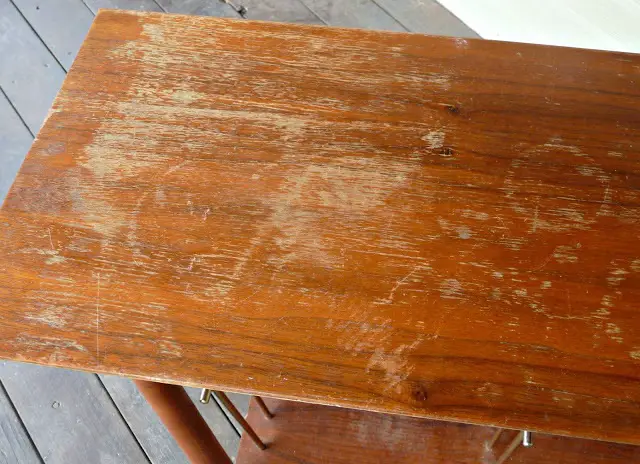
Tools and materials needed
If you start such work you should have a sanding machine because removing old varnish or paint is not easy to do by hand sanding alone. You need to have higher grit sanding paper for wood, i.e. 150-180, even 220, and fine sandpaper to sand between the applied varnish layers. If you are going to apply a gloss varnish, the paper used should be 400 grit so that the fine sanding curls are not visible. For matt varnish, 280 or 320 grain is sufficient. You can also use abrasive sponges - medium for wood and fine for varnish.
You'll also need paint brushes/trowel, cotton cloths, wood stain (if you want to stain the wood), primer and varnish. Choose water-based products for less hassle. Keep packaging covered when you're not working with them to avoid the risk of impurities getting inside or speeding up drying. Do not mix large quantities of material to avoid wastage. This advice does not apply to paint or stain (if you are preparing a particular color), in which case prepare the full amount needed to avoid color differences.
Also useful are wooden sticks for mixing the products in the packaging, pots to put the materials in if you need to mix, thinner for cleaning brushes or thinning varnish, protective gloves (solvent-resistant).
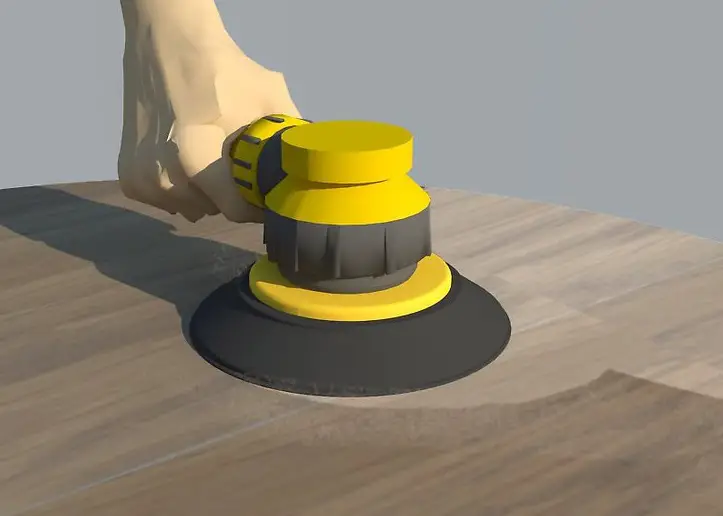
Stages of refinishing
Removing old varnish or paint. To avoid too much effort, use the sanding machine on which you mount sandpaper for sanding the wood. Be careful not to sand too much when you get to the wood. Furniture is often veneered, and the coating can be very thin. Even very old furniture can have veneer. In this case, however, the veneer is slightly thicker. If you don't have machine safety, when you get to the wood do the sanding by hand. This will give you more control. After sanding remove dust with a cotton cloth. Check by hand for roughness.
Another way to remove old varnish is with paint stripper. With a brush, apply the paint stripper, leave it for the time recommended by the manufacturer, then remove the soaked layer with a țicling (a metal blade). This can be repeated several times. After the varnish is completely removed, the surface is washed with thinner and sanded.
This is the stage when any repairs are made. If the furniture is veneered and the veneer has peeled off or it has broken stick it with contact adhesive so you don't have to catch it in the presses. Wipe off excess immediately and sand the area. If glue spots remain they will be very visible when you apply the adhesive. If the wood has cracks or small holes that you want to repair use wood putty. Apply a slightly larger amount because as the putty dries the volume of putty decreases. After drying, sand to level.

Applying the bath. If you want the furniture to be stained, but the wood grain to be visible, use a varnish and varnish finish. If you use a water-based varnish, the wood grain will lift a little and the surface will become rough to the touch. Don't panic. You will solve the problem after the primer or first coat of varnish. Use a rag or rag trowel to apply the stain as you can better control the amount and reduce the risk of staining. With a brush, the amount applied may be larger at first. If the stain is solvent-based, use a mop with a solvent-resistant sponge. To avoid getting too dark a color, use a lighter shade than the desired color and apply 2 coats. This also solves the problems of uniformity.
Primer application. Normally a coat of primer is applied after the wood is dry. This gives a better adhesion to the wood and is better filling (it has more resin and covers better). But there are also varnishes that can be used as a primer. Generally, they are DIY products made specifically for easy application. If you find it too thick, dilute it with water, if it's water-thinnable or solvent-based. For water-based, do not exceed 5% as it will raise the wood grain. Apply by brush or trowel. Do not thin very thinly as there is a risk of drips which are difficult to remove after drying. After applying the first coat allow to dry and sand lightly with fine sandpaper. This will remove the raised grain and any imperfections from the primer coat. After sanding, dust with cotton cloth.
Varnish application. The varnish is applied in the same way as the primer coat. If you are also using varnish as a primer, apply a second coat in the same way as before. Let it dry and see if it is enough. If you want a fuller film, you can apply another coat, without sanding, after the first coat has sanded (1-2 hours). If you leave it until the next day it's a good idea to sand beforehand for better adhesion. If the varnish is glossy, leave the object to dry in as dust-free an area as possible. Dust is the enemy of gloss varnish. It gets trapped in the film and the gloss emphasizes the defect.
For a more pleasant look and better maintenance, you can apply a thin coat of wax over the varnish after drying. Leave overnight and polish. You will get a very nice silky sheen and the finish will be more resistant. From time to time (every few months) repeat the process. This will prevent fine scratches or dents.
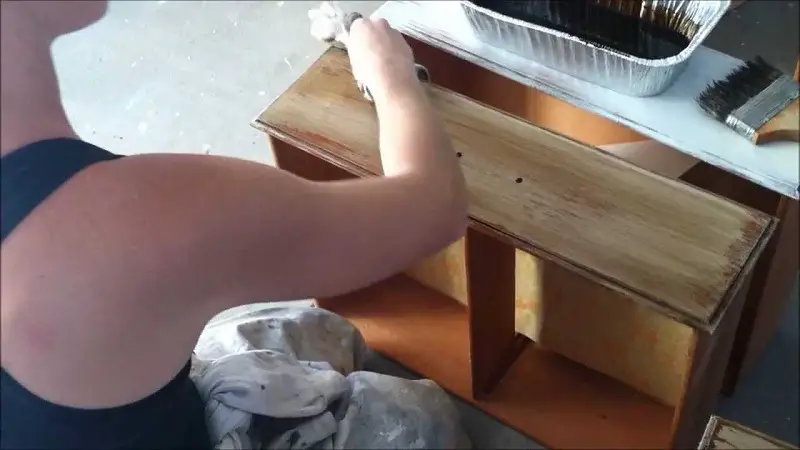
Painted furniture
If you don't want the wood grain to be visible or if the defects are too big and you want to cover them (stains, staining) you can use paint. The wood grain will no longer be visible, but you will not lose the natural design because it will be outlined under the paint (pores, flanges will be visible). The thinner the layer of paint, the more visible the design will be.
In this case you will no longer apply the basecoat but only 2 coats of paint, with sanding in between. Do not apply more unless it is absolutely necessary (the paint has not covered the surface well and the defects are still visible). A thick coat of paint will 'lose' the wood and the surface will start to look like plastic.
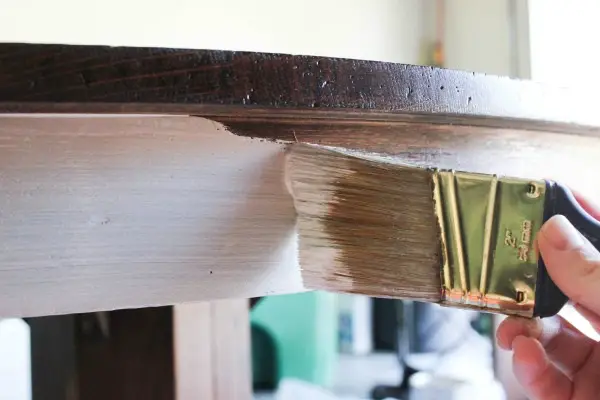
In conclusion
Furniture refurbishing is not simple, but it's not impossible for the do-it-yourself enthusiast. It is good to know that this process is called reconditioning and not restoration. Restoration is much more than that, and it's done by specialists. If you have a valuable piece of furniture, don't start repairing small flaws because the value will go down. An old piece of furniture with a small scratch is more valuable than the same piece of furniture clumsily repaired with a coat of gloss varnish or other inappropriate work.
To those of you who venture out on the adventure of refurbishing your furniture, I wish you success!
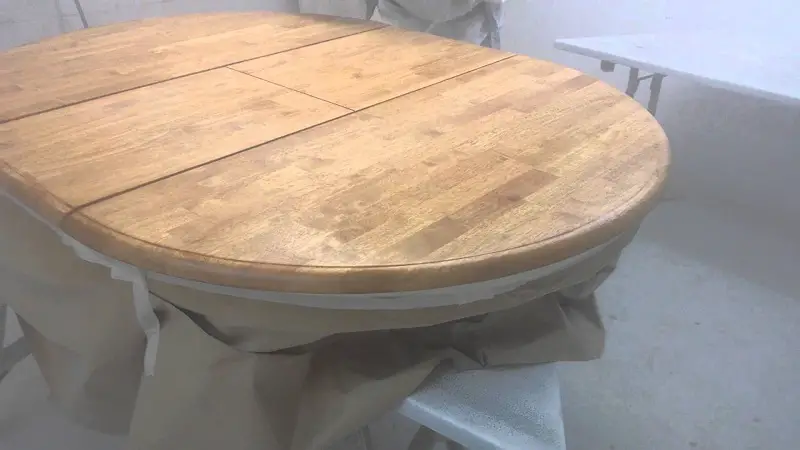




























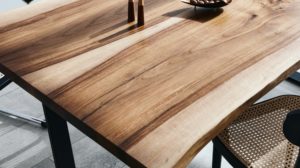






Hello, thank you for the wonderful articles!
You have mentioned on several occasions that the re-painting, the re-painting of the wood will be done with the same type of products as the one already existing on the wood, i.e. water or solvent based.
But I wanted to ask you if over existing varnish (either water-based or solvent-based) on furniture pieces you can wax them. Do you wax? I would like to use pigmented wax to give a more matt and even finish on furniture with little discolouration.
Thank you!
Hello!
And we thank you for following us.
Yes, you can wax over the existing varnish, either water-based or solvent-based. It is good to clean the furniture beforehand of impurities and dirt accumulated over time. That is to say, wash it with a wet cloth and wipe afterwards. Use warm water and dishwashing detergent, then clean water for rinsing. The cloth must be very well wrung out. After washing, wipe well and let it rinse. Then apply the wax with a clean cotton cloth. The shine of the wax appears after polishing. The less you polish, the more matte it will be. The polishing is done with a piece of paste.
More information about the application can be found in the link below.
All the best!
https://revistadinlemn.ro/2019/02/21/finisarea-mobilei-cu-ceara/
I am very grateful for your extraordinarily prompt and detailed response, it is very helpful.
Thanks again!
Dana
Hello,
The more I read your articles the more I realize I don't know anything 🙂
I am a "beginner carpenter" and the area where I feel most insecure is finishing... So many products and options, so many decisions... I've made a few pieces of furniture for myself from solid wood (I have a workshop where let's say I don't lack any particular equipment, but the level of equipment is somewhat semi-professional) and like any beginner I tell myself that I like the natural color of wood, although sometimes I would like to give it a little more color, to give it other accents, without painting it. And here begin the details..
I just wanted to say I appreciate what you do, it's one of the sites I follow constantly. Keep it up!
Good evening!
Thanks for your appreciation!
If you have any questions about finishes, materials and techniques, I am happy to answer them. I really appreciate your willingness to read up on the subject. Few "beginning carpenters" do. Many consider the finish of very little importance.
All the best!
Congratulations on the article!
I would be interested in how I can save a very nice oak root. I can send photos if it helps. I'm currently at the stage of digging and cutting branches)
Thank you!
Good evening!
Thank you!
You can send me photos on mihaela.radu@cesbrands.ro.
After pulling the root out of the ground, it should be washed and cleaned, then cover all cut branches with paraffin or a diluted primer. Leave the root in a well-ventilated area out of the sun (a shed, a shed). If you are going to use it as a root-clipping, slice it before drying it (reduces tension and the risk of cracking).
More information about drying can be found in the links below.
All the best!
https://revistadinlemn.ro/2016/09/02/am-taiat-nucul-cum-il-usuc-sa-nu-crape/
https://revistadinlemn.ro/2019/06/18/umflarea-si-contragerea-lemnului/
https://revistadinlemn.ro/2017/07/03/uscarea-lemnului/
Hello Mrs Radu,
I would like to rebuild some small doors of a 40×50 cm chipboard bookcase, which over time has peeled the surface on which was applied a thin film of...something similar to melamine foil.The inside of the door is intact, lacquered and very well preserved.What should I apply over that face that is already at the bottom a little dented and swollen by moisture.The color of the bookcase is chestnut.
I would appreciate a simple solution that is applicable in the home workshop.
Thank you.
Sincerely, Cristian
Hello!
I could use some photos. You can send them to mihaela.radu@cesbrands.ro
The melamine paper that the chipboard was caulked with must have come loose. In this case you should clean the surface thoroughly so that no foil remains. It should all be removed so that the surface is straight, smooth. Then sand the entire surface with a fine abrasive sponge. After sanding you can paint the chipboard, this is the easiest method. Use a water-based paint, but check the adhesion beforehand. A thin film of adhesive remains on the surface of the chipboard, which may not be compatible with the paint.
More information I could give you after I see the photos.
All the best!